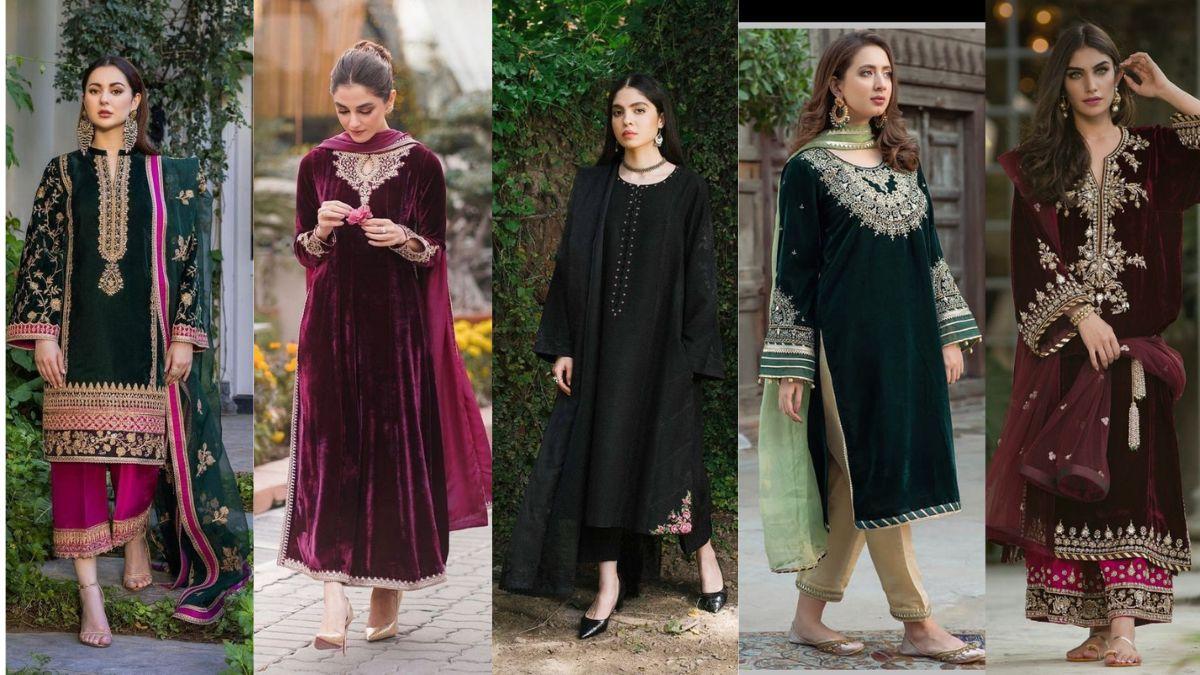The Beauty of Traditional Winter Wear in Pakistan

Winter in Pakistan is a season of charm, celebrations, and fashion. While modern trends dominate the global fashion scene, traditional winter wear in Pakistan holds a timeless appeal. Rooted in cultural heritage and designed to provide warmth, traditional attire reflects the country’s rich history and craftsmanship. This article explores the elegance and practicality of traditional winter wear in Pakistan, shedding light on how it continues to be a favorite choice for people of all ages.
The Cultural Significance of Traditional Attire
Traditional winter wear is deeply intertwined with Pakistani culture. It not only showcases the country’s diverse regional styles but also highlights the skill and artistry of local artisans. From handwoven shawls to intricately embroidered velvet suits, these outfits are more than just clothing—they’re an expression of identity, tradition, and pride.
In colder regions like Gilgit-Baltistan and Azad Kashmir, traditional attire serves both functional and aesthetic purposes. Woolen garments and heavy shawls are commonly worn to combat the harsh weather, while their intricate patterns and designs reflect the heritage of the area.
Key Elements of Traditional Winter Wear
-
Shawls and Stoles:
A staple in every winter wardrobe, shawls and stoles are cherished for their versatility and elegance. Kashmiri shawls, in particular, are highly valued for their luxurious feel and intricate embroidery. Whether paired with a casual kurta or a formal dress, a shawl can elevate any outfit. -
Velvet Ensembles:
Velvet is a popular fabric for winter wear in Pakistan, especially for formal occasions. Velvet suits with detailed embroidery and embellishments are perfect for weddings, parties, and festive gatherings. The fabric’s rich texture adds a touch of opulence to traditional outfits. -
Khaddar and Woolen Fabrics:
Khaddar is a handwoven fabric that has been a part of Pakistani fashion for decades. Its durability and warmth make it a favorite choice for winter wear. Woolen fabrics, often adorned with subtle patterns, are also widely used in traditional outfits. -
Ajrak and Sindhi Caps:
Ajrak, a traditional block-printed fabric, is often used to make shawls and stoles. Paired with Sindhi caps, these accessories add a cultural touch to winter outfits, especially in Sindh and surrounding regions.
Regional Variations in Traditional Winter Wear
Pakistan’s diverse culture is reflected in its regional attire. Each province offers unique styles and fabrics that cater to local climates and traditions:
- Punjab: Woolen shawls and khaddar outfits are popular, often featuring vibrant colors and floral patterns.
- Sindh: Ajrak shawls and cotton-based winter attire dominate the region’s fashion.
- Khyber Pakhtunkhwa: Woolen coats, pashmina shawls, and traditional caps are essential elements of winter wear.
- Balochistan: The use of heavy woolen fabrics and embroidered shawls is common, reflecting the rugged beauty of the region.
Modern Adaptations of Traditional Styles
While traditional winter wear remains rooted in heritage, modern adaptations have made it more accessible and versatile. Designers and brands are incorporating traditional elements into contemporary cuts and patterns, creating a fusion that appeals to younger audiences. For instance, velvet kurtas with modern silhouettes and khaddar tunics paired with denim are popular choices among the youth.
The Role of Artisans in Preserving Tradition
Artisans play a crucial role in keeping traditional winter wear alive. Their craftsmanship and attention to detail are evident in every piece, from the intricate embroidery on shawls to the handwoven patterns on khaddar fabric. Supporting local artisans not only helps preserve this heritage but also promotes sustainable fashion.
Shopping for Traditional Winter Wear
Traditional winter wear is widely available across Pakistan. Local bazaars, such as Lahore’s Anarkali Market and Karachi’s Zainab Market, are treasure troves for those seeking authentic pieces. Additionally, many brands and online platforms now offer traditional attire, making it easier for people to access these timeless designs.
Conclusion
Traditional winter wear in Pakistan is a celebration of culture, craftsmanship, and comfort. It stands as a testament to the country’s rich heritage, blending functionality with aesthetic appeal. As you embrace the winter season, consider incorporating these timeless pieces into your wardrobe. Not only will you stay warm and stylish, but you’ll also be part of preserving a tradition that is uniquely Pakistani.
- Art
- Causes
- Crafts
- Dance
- Drinks
- Film
- Fitness
- Food
- Games
- Gardening
- Health
- Home
- Literature
- Music
- Networking
- Other
- Party
- Religion
- Shopping
- Sports
- Theater
- Wellness


